Why Do Men Have Adam's Apples. It's So Sexy But Seems So Unnecessary
Why do men have Adam's apples. It's so sexy but seems so unnecessary
It basically is unnecessary lol
It’s not that only men have Adam’s apples, women do too, but it’s less prominent. An Adam’s apple is just a piece of cartilage that protects your larynx (the voicebox) directly behind it. As boys & girls go through puberty, our voicebox grows which:
1. Causes our voice to deepen 2. Pushes the cartilage further forwards
In boys, the larynx grows in size significantly more which therefore pushes forward the evident bump of cartilage we like to call an Adam’s Apple.
More Posts from Philosophical-amoeba and Others


On this day, 14th February 1779, Captain James Cook was killed in Hawaii.
James Cook completed three major voyages of discovery. On his first, departing in 1768, he commanded the ‘Endeavour’ on an expedition to chart the transit of Venus. He returned to England in 1771, having also circumnavigated the globe, including exploring and charting New Zealand and Australia’s eastern coast.
On his second journey (1772-1775), he commanded the 'Resolution’ and the 'Adventure’ on an expedition to the South Pacific, disproving the rumour of a great southern continent, exploring the Antarctic Ocean, New Hebrides and New Caledonia.
Cook’s third and final voyage (1776-1779) of discovery was an attempt to locate a North-West Passage, an ice-free sea route which linked the Atlantic to the Pacific Ocean. Again, Cook commanded the Resolution while Charles Clerke commanded Discovery. Leaving England in 1776, Cook first sailed south to Tahiti to return Omai, a Tahitian man, to his home. Omai had been taken on Cook’s second voyage and had been an object of curiosity in London. It was on this, Cook’s final voyage, that he discovered the Hawaiian Islands in January 1778. This major discovery would lead to his death – Cook was killed on a return visit to Hawaii at Kealakekua Bay, on 14 February 1779.
Kealakekua Bay was considered the sacred harbour of Lono, the fertility god of the Hawaiians. Cook and his compatriots were welcomed as gods but after one of the crewmen died, exposing the Europeans as mere mortals, relations became strained. On February 4, 1779, the British ships sailed from Kealakekua Bay, but rough seas damaged the foremast of the Resolution, and after only a week at sea the expedition was forced to return to Hawaii.
The Hawaiians greeted Cook and his men by hurling rocks; they then stole a small cutter vessel from the Discovery. Negotiations with King Kalaniopuu for the return of the cutter collapsed after a lesser Hawaiian chief was shot to death and a mob of Hawaiians descended on Cook’s party. The captain and his men fired on the angry Hawaiians, but they were soon overwhelmed, and only a few managed to escape to the safety of the Resolution. Captain Cook himself was killed by the mob. A few days later, the Englishmen retaliated by firing their cannons and muskets at the shore, killing some 30 Hawaiians. The Resolution and Discovery eventually returned to England.
The State Library of New South Wales holds significant original sources relating to James Cook, these paintings from the collection depict the death of Captain Cook.

Carved ditty box shaped like a coffin on silver stand, containing a rough watercolour sketch of the death of Cook, including a lock of Cook’s hair, ca. 1779 / carved by sailors on Cook’s last ship HMS Resolution. State Library of NSW.

Too much sex causes genitals to change shape, beetle study shows
Sexual conflict between males and females can lead to changes in the shape of their genitals, according to research on burying beetles by scientists at the University of Exeter.
The study, published in the journal Evolution, provides new evidence that conflict over how often mating takes place can lead to males evolving longer penis-like organs and females larger ‘claws’ on their genitalia, within ten generations.
“Our research demonstrates the general importance of conflicts of interest between males and females in helping to generate some of the biodiversity that we see in the natural world. It’s fascinating how genital evolution can happen so fast – in ten generations – showing how rapidly evolutionary changes can occur.”
Paul E. Hopwood, Megan L. Head, Eleanor J. Jordan, Mauricio J. Carter, Emma Davey, Allen J. Moore, Nick J. Royle. Selection on an antagonistic behavioral trait can drive rapid genital coevolution in the burying beetle,Nicrophorus vespilloides. Evolution, 2016; DOI: 10.1111/evo.12938

David in Singapore, Serious Moonlight Tour 1983
Photo © Denis O’Regan










The Last Japanese Mermaids
For nearly two thousand years, Japanese women living in coastal fishing villages made a remarkable livelihood hunting the ocean for oysters and abalone, a sea snail that produces pearls. They are known as Ama. The few women left still make their living by filling their lungs with air and diving for long periods of time deep into the Pacific ocean, with nothing more than a mask and flippers.
In the mid 20th century, Iwase Yoshiyuki returned to the fishing village where he grew up and photographed these women when the unusual profession was still very much alive. After graduating from law school, Yoshiyuki had been given an early Kodak camera and found himself drawn to the ancient tradition of the ama divers in his hometown. His photographs are thought to be the only comprehensive documentation of the near-extinct tradition in existence










Le festival Sōma-shi 相馬市 - préfecture de Fukushima-ken 福島県.
La région de Sōma est réputée pour ses chevaux. Tous les ans, du 22 au 25 juillet, s'y déroule le Sōma nomaoi 相馬野馬追, littéralement : “chasse aux chevaux sauvages de Sōma” autour des sanctuaires Ōta jinja 太田神社 et Odaka jinja 小高神社 à Minamisōma-shi 南相馬市, et du sanctuaire Nakamura jinja 中村神社 à Sōma. Durant 3 jours, les anciens cavaliers samouraïs sont mis à l’honneur lors de différentes démonstrations, parades de samouraïs, courses de chevaux, reconstitutions de batailles et processions.
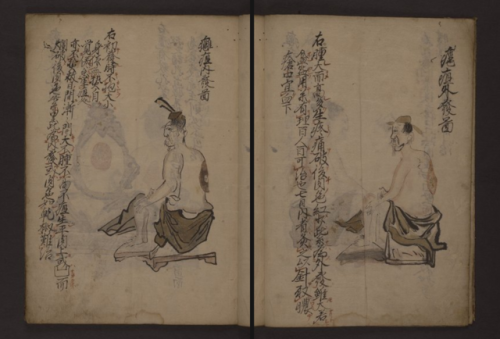


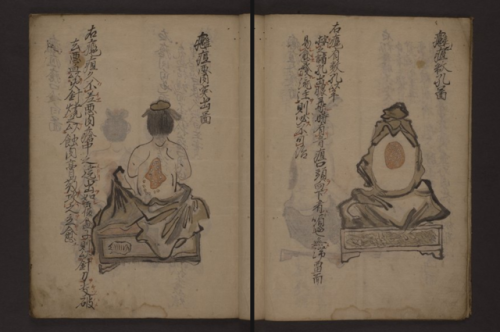



LJS 433 is a 17th century Japanese illustrated treatise on the diagnosis of abscesses and tumors and their treatment. Most of the treatments involve acupuncture or burning different substances near the skin. This manuscript, titled Yoso Zusetsu, is made with paper and written in Chinese script.
When comparing the manuscripts that we’ve looked at this week, it’s interesting to note all of the differences - from the manner in which a body is depicted (size, shape, hair style, details) to the medium and script that is used for the manuscript. Even considering how medical practices differ from culture to culture forms many implications!
I highly recommend checking out other illustrated diagrams in the full digitized version of LJS 433 on Openn: http://openn.library.upenn.edu/Data/0001/html/ljs433.html
or Penn In Hand: http://hdl.library.upenn.edu/1017/d/medren/4827745
*This week, we were taking a look at manuscripts having to do with health, medicine, and human physiology specifically focusing on how bodies are displayed in manuscript illuminations or diagrams across different cultures.
I hope you enjoyed this segment!
+heroes of nusantara: multatuli
YES, I, Multatuli, “who have suffered much,”—I take the pen. I do not make any excuses for the form of my book,—that form was thought proper to obtain my object…. I will be read! Yes, I will be read. I will be read by statesmen who are obliged to pay attention to the signs of the times; by men of letters, who must also look into the book of which so many bad things are said; by merchants, who have an interest in the coffee auctions; by lady’s-maids, who read me for a few farthings; by governors-general in retirement; by ministers who have something to do; by the lackeys of these Excellencies; by mutes, who, more majorum, will say that I attack God Almighty, when I attack only the god which they made according to their own image; by the members of the representative chambers, who must know what happens in the extensive possessions over the sea which belong to Holland….
Ay, I shall be read!

Eduard Douwes Dekker was born in Amsterdam, March 2nd 1820. His father was a ship’s captain and intended for his son to have a career in trade. This humdrum prospect disgusted Douwes Dekker and in 1838 he obtained a post as a civil servant on the island of Java. During the period between 1848 and 1851 Douwes Dekker eventually rose to serve as assistant resident in various regencies in the Indonesian archipelago including Natal, North Sumatra, Manado in Sulawesi and Ambon in the Moluccas. In 1857 he was transferred to Lebak, in the Bantam residency of Java (now Banten province). By this time, however, all the secrets of Dutch administration were known to him, and he had begun to openly protest about the abuses of the colonial system. Consequently, he was threatened with dismissal from his office for his openness of speech. Douwes Dekker resigned his appointment and returned to the Netherlands.
He was determined to expose in detail the scandals he had witnessed, and he began to do so in newspaper articles and pamphlets. Little notice, however, was taken of his protestations until, in 1860, he published his novel Max Havelaar under the pseudonym of Multatuli. Douwes Dekker’s new pseudonym, which is derived from Latin, means, “I have suffered much”, or, more literally “I have borne much” referring to himself, as well as, it is thought, to the victims of the injustices he saw. An attempt was made to suppress the inflammatory book, but in vain; it was read all over Europe. Apologists for colonialism accused Douwes Dekker’s horrific depictions of being exaggerated.

[ his statue in amsterdam ]
Although it was translated into English in 1868, the text wasn’t available in the author’s home country until over a century later in 1972. Collectively, Multatuli’s Max Havelaar has been translated into 34 different languages worldwide since its initial publication. Credited as the stirring initiation of the nationalist movement responsible for the termination of Dutch colonization of Indonesia following World War II, Max Havelaar’s legacy is not confined to literary accomplishment, but can be considered a work of great political success and inspired social liberation. Max Havelaar’s influence on the national movement ultimately culminated in the passionate command to end decolonization worldwide. The story of Max Havelaar illuminates the inhumane and political injustices brutally imposed upon the native peoples of the region.
Sigmund Freud listed Multatuli as one of his favorite writers. Multatuli’s brother, Jan Douwes Dekker, was the grandfather of Ernest Douwes Dekker (also known as Danudirja Setiabudi, a National Hero of Indonesia). There is a museum for him in Amsterdam. Multatuli is also known as the person who coined the term emerald of equator, a poetic nickname of Indonesia.

This book is an introduction…. I shall increase in strength and sharpness of weapons, according as it may be necessary. Heaven grant that it may not be necessary!… No, it will not be necessary! For it is to thee I dedicate my book: WILLIAM THE THIRD, King, Grand Duke, Prince,… more than Prince, Grand Duke, and King,… EMPEROR of the magnificent empire of INSULIND, which winds about the equator like a garland of emeralds!… I ask THEE if it be thine IMPERIAL will that the Havelaars should be bespattered with the mud of Slymerings and Drystubbles; and that thy more than thirty millions of SUBJECTS far away should be ill treated and should suffer extortion in THY name!
source: wikipedia; culture trip
quotes from bartleby, excerpt of max havelaar
further reading: paper on multatuli
12 Amazing Facts About Elephants
In honor of World Elephant Day, we present you with 12 little known facts about one of our favorite creatures…in GIFs, of course.
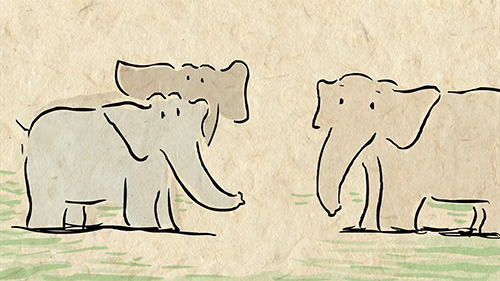
1. Elephants know every member of their herd and are able to recognize up to 30 companions by sight or smell.
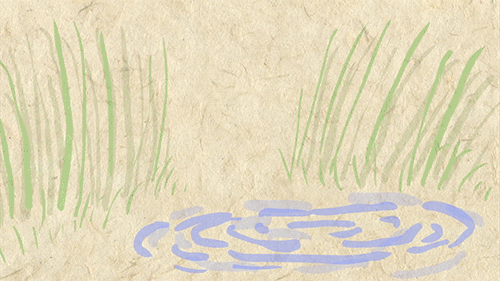
2. They can remember and distinguish particular cues that signal danger and can recall locations long after their last visit.
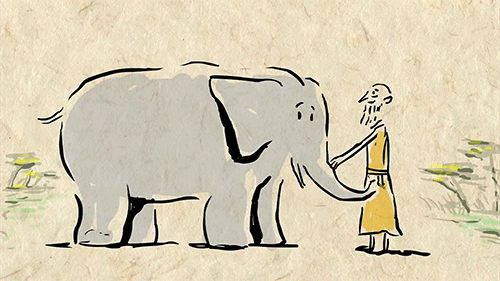
3. An elephant’s memory is not limited to its herd, nor is it limited to its species. In one instance, two circus elephants that performed together rejoiced when crossing paths 23 years later. Elephants have also recognized humans that they once bonded with after decades apart. 4.
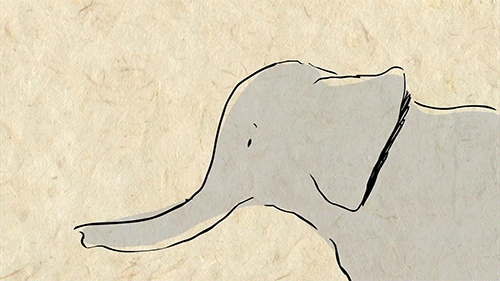
4. The elephant boasts the largest brain of any land mammal as well as an impressive encephalization quotient (the size of the animal’s brain relative to its body size). The elephant’s EQ is nearly as high as a chimpanzee’s.
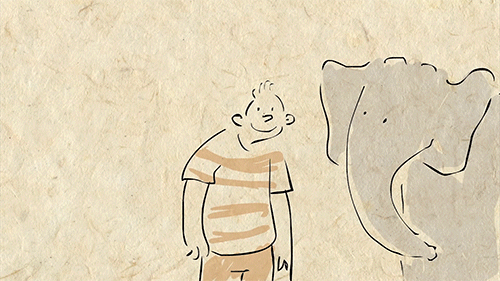
5. The elephant brain is remarkably similar to the human brain, with as many neurons and synapses, as well as a highly developed hippocampus and cerebral cortex.
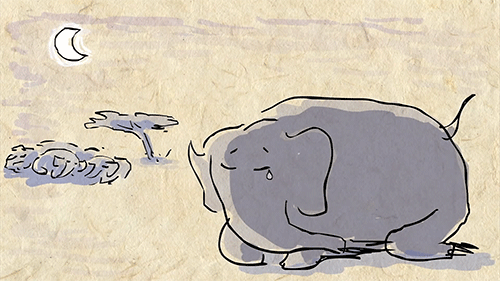
6. Elephants are one of the few non-human animals to suffer from post-traumatic stress disorder.

7. Elephants are creative problem solvers.
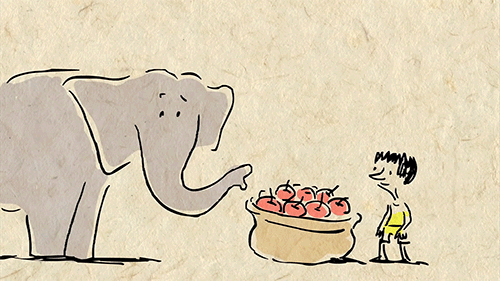
8. Don’t try to outsmart an elephant! They have an understanding of basic arithmetic and can even keep track of relative quantities.
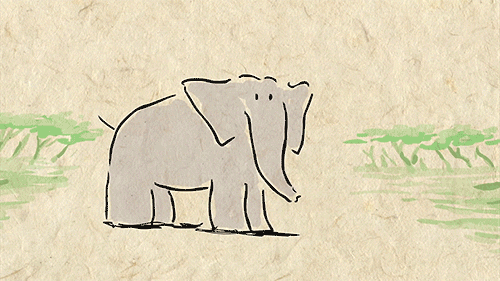
9. Elephants communicate using everything from body signals to infrared rumbles that can be heard from kilometers away. Their understanding of syntax suggests that they have their own language and grammar.
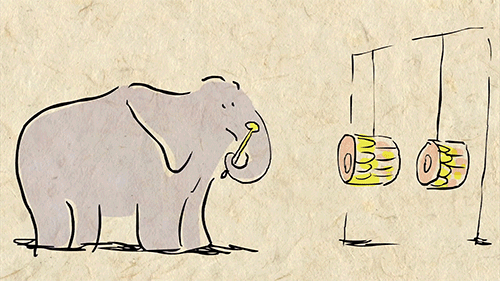
10. Elephants can recognize 12 distinct tones of music and recreate melodies.

11. Elephants are the only non-human animals to mourn their dead, performing burial rituals and returning to visit graves.
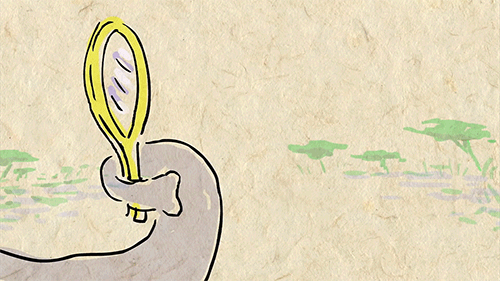
12. Elephants are one of the few species who can recognize themselves in the mirror.
Given what we now know about elephants, and what they continue to teach us about animal intelligence, it is more important than ever to make sure that these magnificent creatures do not vanish.
Check out some more fun elephant facts here and be sure to watch the TED-Ed Lesson Why elephants never forget - Alex Gendler
Animation by the ever-talented Avi Ofer

New CDC Research Debunks Agency’s Assertion That Mercury in Vaccines Is Safe
The CDC study, Alkyl Mercury-Induced Toxicity: Multiple Mechanisms of Action, appeared last month in the journal, Reviews of Environmental Contamination and Toxicology. The 45-page meta-review of relevant science examines the various ways that mercury harms the human body. Its authors, John F. Risher, PhD, and Pamela Tucker, MD, are researchers in the CDC’s Division of Toxicology and Human Health Sciences, Agency for Toxic Substances and Disease Registry.
“This scientific paper is the one of most important pieces of research to come out of the CDC in a decade,” Paul Thomas, M.D., a Dartmouth-trained pediatrician who has been practicing medicine for 30 years, said. “It confirms what so many already suspected: that public health officials have been making a terrible mistake in recommending that we expose babies and pregnant women to this neurotoxin. I regret to say that I gave these shots to children. The CDC led us all to believe that it was perfectly safe.”
Among the findings of the CDC’s new study:
Methylmercury, the highly-regulated neurotoxin found in fish, and ethylmercury (found in medical products, including influenza and tetanus vaccines, ear drops and nasal sprays) are similarly toxic to humans. Methylmercury and ethylmercury share common chemical properties, and both significantly disrupt central nervous system development and function.
Thimerosal is extremely toxic at very low exposures and is more damaging than methylmercury in some studies. For example, ethylmercury is even more destructive to the mitochondria in cells than methylmercury.
The ethylmercury in thimerosal does not leave the body quickly as the CDC once claimed, but is metabolized into highly neurotoxic forms.
-
 lovelysamus reblogged this · 6 years ago
lovelysamus reblogged this · 6 years ago -
 psionic--drain liked this · 8 years ago
psionic--drain liked this · 8 years ago -
 frayedfire liked this · 8 years ago
frayedfire liked this · 8 years ago -
 maid-of-timey-wimey reblogged this · 8 years ago
maid-of-timey-wimey reblogged this · 8 years ago -
 clitorius-maximus reblogged this · 8 years ago
clitorius-maximus reblogged this · 8 years ago -
 secret-vetblr reblogged this · 8 years ago
secret-vetblr reblogged this · 8 years ago -
 spork-of-humanity liked this · 8 years ago
spork-of-humanity liked this · 8 years ago -
 star011 reblogged this · 8 years ago
star011 reblogged this · 8 years ago -
 brownsugagoddess-blog liked this · 8 years ago
brownsugagoddess-blog liked this · 8 years ago -
 williewonka804 liked this · 8 years ago
williewonka804 liked this · 8 years ago -
 g-a-y-g-o-y-l-e reblogged this · 8 years ago
g-a-y-g-o-y-l-e reblogged this · 8 years ago -
 g-a-y-g-o-y-l-e liked this · 8 years ago
g-a-y-g-o-y-l-e liked this · 8 years ago -
 thegreatandpowerful-tim liked this · 8 years ago
thegreatandpowerful-tim liked this · 8 years ago -
 weepingwillowphoenix reblogged this · 8 years ago
weepingwillowphoenix reblogged this · 8 years ago -
 weepingwillowphoenix liked this · 8 years ago
weepingwillowphoenix liked this · 8 years ago -
 studja liked this · 8 years ago
studja liked this · 8 years ago -
 xxthesmittenkittenxx--2 liked this · 8 years ago
xxthesmittenkittenxx--2 liked this · 8 years ago -
 fraysandgrays liked this · 8 years ago
fraysandgrays liked this · 8 years ago -
 becoming-a-vet reblogged this · 8 years ago
becoming-a-vet reblogged this · 8 years ago -
 sighstyl liked this · 8 years ago
sighstyl liked this · 8 years ago -
 inactive-elw-2025 liked this · 8 years ago
inactive-elw-2025 liked this · 8 years ago -
 subkookie reblogged this · 8 years ago
subkookie reblogged this · 8 years ago -
 chelcoast reblogged this · 8 years ago
chelcoast reblogged this · 8 years ago -
 gpointe liked this · 8 years ago
gpointe liked this · 8 years ago -
 carlaalba liked this · 8 years ago
carlaalba liked this · 8 years ago -
 tattoosingarishhues liked this · 8 years ago
tattoosingarishhues liked this · 8 years ago -
 nelotegreitic reblogged this · 8 years ago
nelotegreitic reblogged this · 8 years ago -
 nelotegreitic liked this · 8 years ago
nelotegreitic liked this · 8 years ago -
 legreensheep liked this · 8 years ago
legreensheep liked this · 8 years ago -
 fairycirclemagic liked this · 8 years ago
fairycirclemagic liked this · 8 years ago -
 deadlyynightshades reblogged this · 8 years ago
deadlyynightshades reblogged this · 8 years ago -
 kafkussy liked this · 8 years ago
kafkussy liked this · 8 years ago -
 xxvi0lent-vahlkampfiidaexx reblogged this · 8 years ago
xxvi0lent-vahlkampfiidaexx reblogged this · 8 years ago -
 xxvi0lent-vahlkampfiidaexx liked this · 8 years ago
xxvi0lent-vahlkampfiidaexx liked this · 8 years ago -
 clumsyninjas reblogged this · 8 years ago
clumsyninjas reblogged this · 8 years ago -
 beetarget liked this · 8 years ago
beetarget liked this · 8 years ago -
 pasteldreamsglitternightmares reblogged this · 8 years ago
pasteldreamsglitternightmares reblogged this · 8 years ago -
 pasteldreamsglitternightmares liked this · 8 years ago
pasteldreamsglitternightmares liked this · 8 years ago -
 neomuhae-baepsae-tsubasa reblogged this · 8 years ago
neomuhae-baepsae-tsubasa reblogged this · 8 years ago -
 neomuhae-baepsae-tsubasa liked this · 8 years ago
neomuhae-baepsae-tsubasa liked this · 8 years ago
A reblog of nerdy and quirky stuff that pique my interest.
291 posts